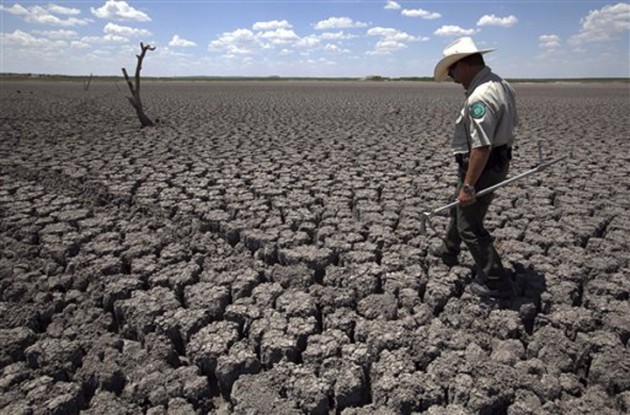
Associated Press
By Ramit Plushnick-Masti
Associated Press
AUSTIN — When Susan Combs was growing up on her family’s West Texas ranch, conserving water was part of everyday life: If the windmill wasn’t turning and the storage tank at least half full, the household plumbing was turned off — even the toilets.
In her political career, Combs has been urging Texans to save water, first as a lawmaker, then as agriculture commissioner and now as state comptroller. After the worst one-year drought in state history, people seem to be listening.
Combs has reason to hope that lessons from the drought could change the state’s attitudes about water usage. And they are trying to capitalize on the heightened awareness by adopting conservation plans that will ease the next crisis.
“From a water-supply perspective, we are just not prepared,” Combs said. “If each town and city doesn’t come up with a successful water plan, the state will be worse off for it.”
The drought that began more than a year ago is finally breaking in parts of Texas. But state and local officials aren’t content to watch the parched landscape change color. They want to analyze the dry spell and assess what worked, what failed and what needs improvement. A few examples:
• The mayors of Dallas and Fort Worth and suburban Arlington and Irving are asking their city councils to consider making permanent the twice-a-week maximum watering restrictions that have been in place for several months.
• Nearly every legislative committee in the state House and Senate has been asked to review some aspect of the drought. At last month’s first meeting of the House Natural Resources Committee, Chairman Allan Ritter pleaded with participants: “Please do not forget how dry that it can get.”
• San Antonio, which spent nearly $300,000 promoting water restrictions during the drought, concluded that the effort was so successful that the city now has a campaign reminding people of the risks of another potentially hot, dry summer.
• The Lower Colorado River Authority, which manages two of the largest lakes that provide water to Austin and the surrounding area, has already submitted a proposed long-term plan that would significantly alter how it manages and distributes water.
• The Texas Water Development Board is reviewing ways to create a set of guidelines that would help communities determine when to restrict water usage.
One obstacle looms over many of these efforts: The state can make plans for water needs, but it has no authority or tools to ensure the plans are actually implemented.
Fifteen years ago, in the mid-1990s, Texas suffered a drought that plunged farmers and ranchers into bankruptcy and highlighted how unprepared cities were to deal with severe water shortages. As a result, the Legislature ordered the Water Development Board to plan regionally for the state’s water needs, slicing up Texas into areas that would work together to prepare for the future.
Since then, regional agencies have spent millions of dollars on three new water plans — one every five years — designed to address growing population, scarce water resources and future needs.
“So now, we had another drought, and we had cities running out of water and that’s largely because the plan wasn’t implemented,” said Dan Hardin, director of the water resources planning division.
Hardin said he worries that the state’s fiscal problems will prevent meaningful improvements.
In addition, the state’s utilities did not impose restrictions consistently. In some areas, one city restricted water usage, while a neighboring town did not. Houston, for example, had restrictions in place for months, while neighboring Sugar Land never implemented its drought-contingency plan.
“You don’t see people reacting uniformly to an issue that hit Texas pretty uniformly,” said Laura Huffman, director of the Nature Conservancy in Texas.
Farmers and ranchers are taking steps of their own. Many are drilling wells, realizing that in the next drought they will not be able to rely on surface water alone.
In fact, so many farmers are drilling wells, conservation districts say they will have to stop permitting them at some point.
Combs’ office issued a report in February that also looked at strategies employed in other cities.
In arid New Mexico, Santa Fe diversified its water supply and now draws water from two lakes and two aquifers. The city has also taken steps to prevent water evaporation and wildfires.
Those projects could also be useful in Texas, where evaporation during triple-digit heat helped deplete reservoirs and wildfires destroyed more than 1,600 homes and charred 33,000 acres near Austin.
Combs said she believes Texas should invest in desalinization, an expensive but quicker alternative to building new reservoirs. Cities, she said, must create more consistent plans for dealing with drought and offer financial incentives to help farmers.
What is certain, she said, is that if steps aren’t taken, Texas’ future will be shaky.
The lack of water, Combs said, “is the single most devastating thing that can happen to the economy.”


